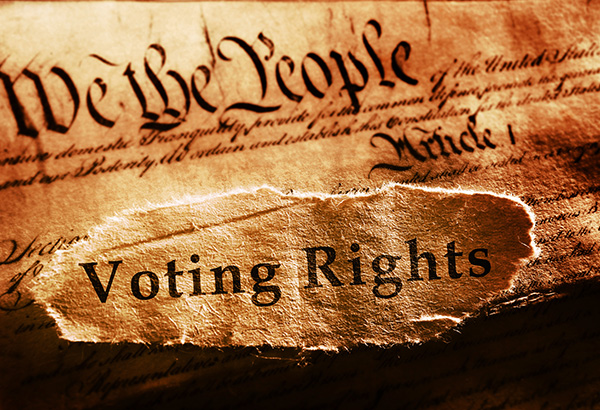
"I have never yet been able to find one consideration, one argument, or suggestion in favor of man’s right to participate in civil government which did not equally apply to the right of woman…"
— Frederick Douglass
Frederick Douglass had it right. What is true for one should be true for all. To commemorate the day in 1920 when some American women were granted the right to vote, we celebrate Women’s Equality Day annually on August 26.1 The battle for this right, denied to so many for so long, was hard fought and finally won.
Leading up to the monumental and historic day women were granted the right to vote in the United States, there were many people who supported and worked for equality for women, including Elizabeth Cady Stanton and Lucretia Mott. History tells us the Women's Rights (Movement) sprung onto the national stage during a convention in Seneca Falls, New York, in July 1848 when these two women began to map out a path and a plan for the direction of the Women's Rights Movement through the "Declaration of Sentiments." This document, like the Declaration of Independence, listed the objectives of the movement, including but not limited to equities in education and property rights. Disagreements rang out between Mott and Stanton, regarding whether they should include the right to vote for women. Mott was concerned that including the voting rights element was going too far and would negate the seriousness of the Movement.2
Meanwhile, the only Black man present during the convention, former enslaved abolitionist Frederick Douglass, was asked by Stanton to help convince Mott and others to keep the proposal for voting rights for women in the document. Douglass spoke up in favor of the inclusion of the right for women to vote, resulting in consensus and a charge among the group. After the convention, "With increasing frequency, Stanton denounced the extension of voting rights to African-American men, while restrictions on women remained; she praised the virtues of “educated white women," and warned that new immigrants and African Americans were not prepared to exercise the rights of citizens. Mott strongly disagreed with Stanton and later broke ties with her in support and allyship for African Americans’ rights along with women’s rights. Mott became the President of the American Equal Rights Association (AERA), working to “secure Equal Rights to all American citizens, especially the right of suffrage, irrespective of race, color, or sex.”3
Stanton's rhetoric alienated African American women involved in the fight for women's rights, and similar ideas about race and gender persisted in the women's suffrage movement well into the twentieth century."4 This misguided view is a "tangled network of contradictions" and justice for all. While Black men were legally allowed to vote due to the passing of the 15th Amendment in 1870, the right was rescinded shortly thereafter. It was several decades later, (i.e., 1965) before Black women and men were able to march to the polls, ready to amplify their voices behind the candidates of their choice. They stood with the hope of no longer having their ballots ripped from their hands, the sting of injustice slapping their faces, and the indignity of their bodies trampled to the ground, just so they could be heard.
The battle for the ability, and accessibility to vote did not end in 1965. Limited English proficient citizens struggled with voting for at least a decade after the Voting Rights Act of 1965 became law until President Gerald Ford signed the extension of the Voting Rights Act on August 6, 1975. Luis Fraga, a professor in Notre Dame's Institute of Latino Studies and its politics department stated, "Extending voting rights protections to Latinos made it possible to translate registration materials into Spanish, launching larger Latino voter registration drives."5 It was not until 1992 that the Voting Rights Act expanded language protections to cover areas with 10,000 or more voters with limited English proficiency.6
The history of American voting rights is painful. The battle for equity and accessibility is hard fought. Our freedoms and the wars to achieve and maintain equity, require vigilance, soldiers for justice, allies, dedication, and determination not to turn back. As we commemorate August 26 as Women’s Equality Day, as a great day for many American women, let us not forget the words of Frederick Douglass “We have to do with the past only as we can make it useful to the present and the future.”
Sources
- https://constitutioncenter.org/
- https://history.house.gov
- https://www.britannica.com
- https://history.house.gov/
- https://www.nbcnews.com
- https://www.advancingjustice-aajc.org
Do you have a story idea for us? Do you want to submit a guest blog? If it's about equity, diversity, or inclusion, please submit to edi.stories@nih.gov.
For news, updates, and videos, subscribe or follow EDI on: Twitter, Instagram, Blog, YouTube.






